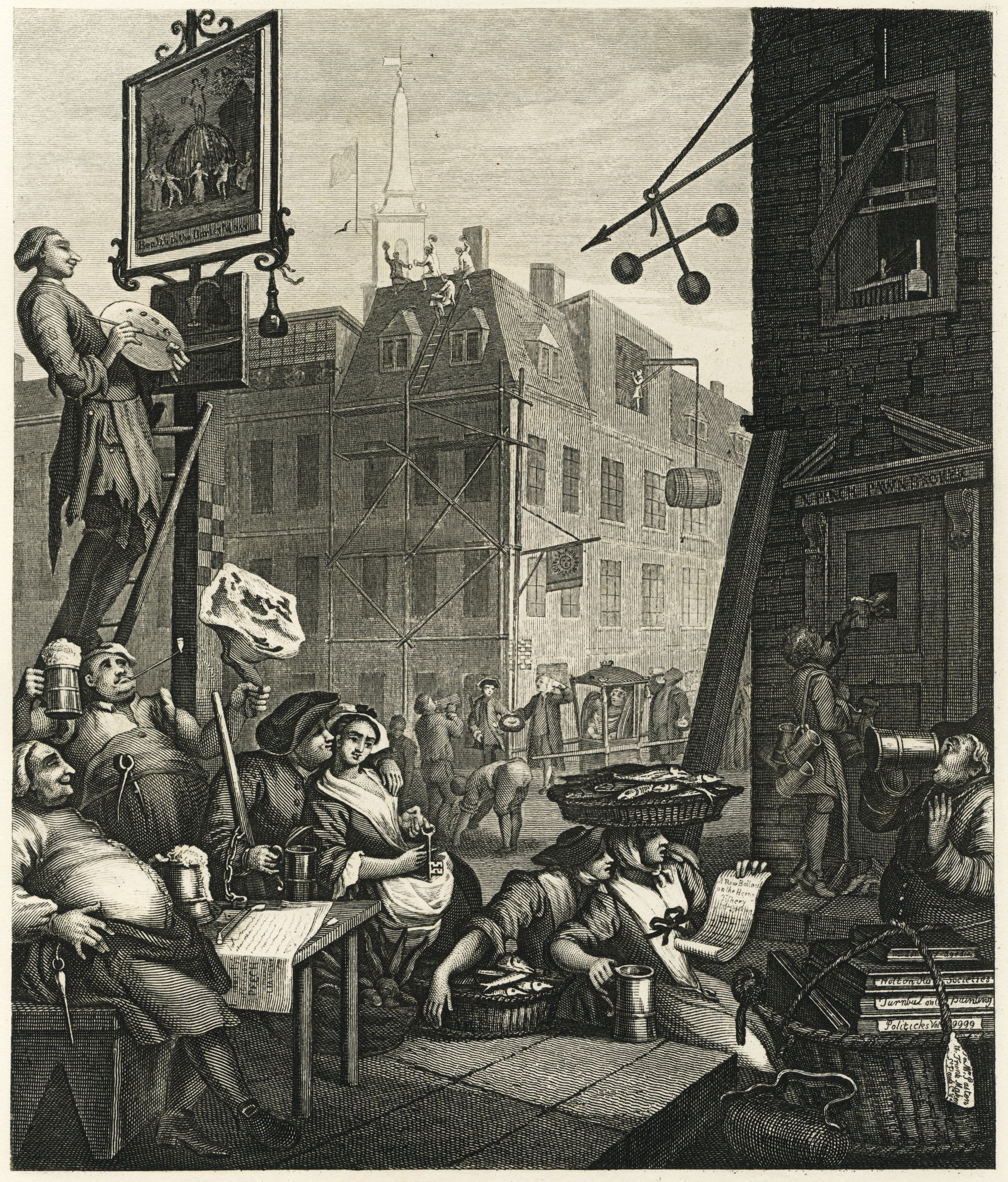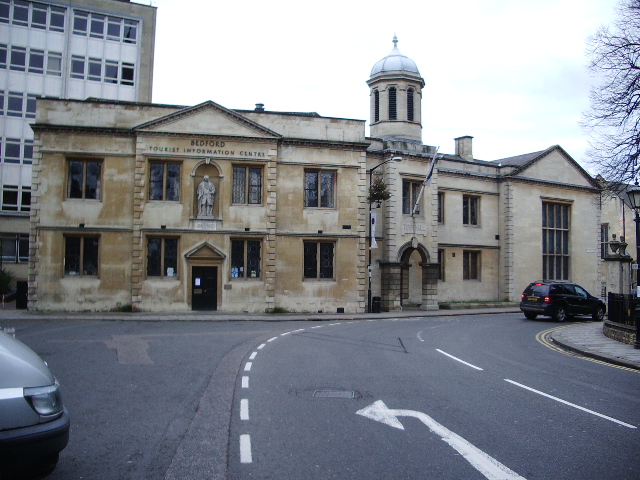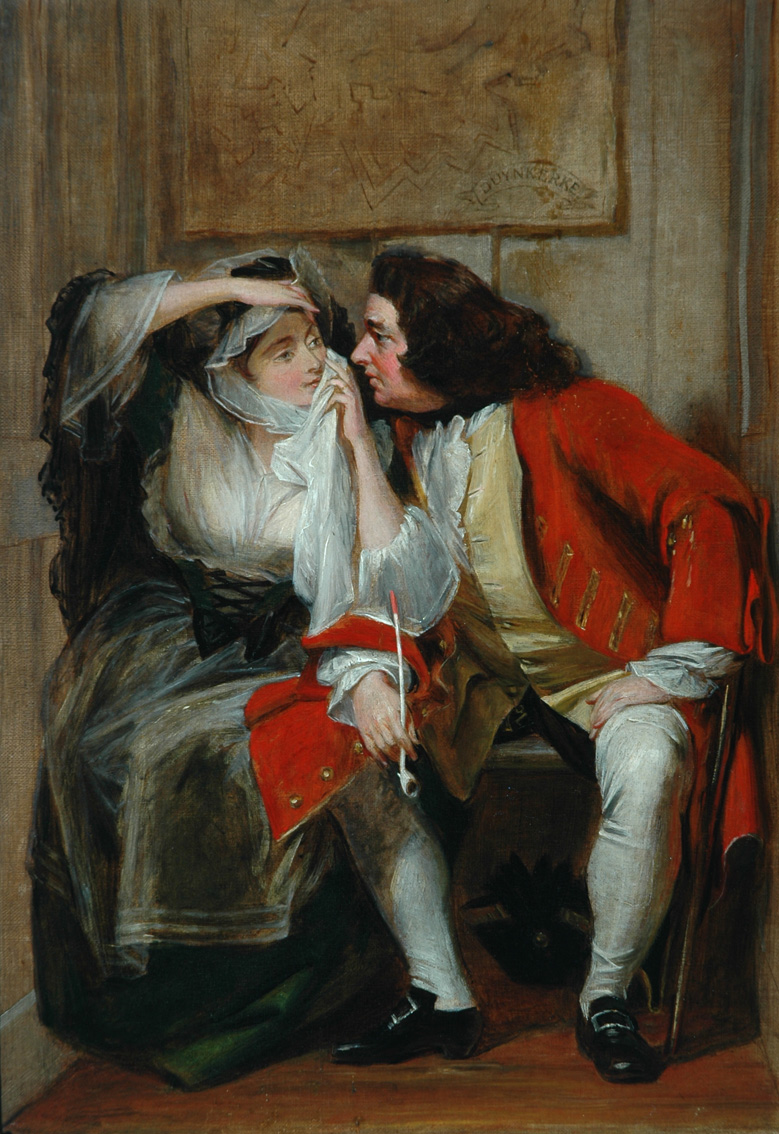|
Samuel Davenport (engraver)
Samuel Davenport (1783–1867) was an English line engraver. He was one of the earliest to engrave on steel. Life Davenport was born at Bedford, 10 December 1783: while he was still small, his father, an architect and surveyor, moved to London. There he was in due course articled to Charles Warren. His earlier works were book illustrations after the designs of Henry Chawner Shenton, Henry Corbould, and others; but subsequently he engraved in outline a large number of portraits for biographical works. He died 15 July 1867. His son, Samuel Thomas Davenport (born 1821), was also an engraver. Works Davenport is said by Redgrave to have 700 portraits for one publication alone. Examples of his work are the plates which he engraved for the ''Forget-Me-Not'' annual between 1828 and 1842, and which include: *''The Sister's Dream'', ''Fathime and Euphrosyne'', and ''The Disappointment'', after Henry Corbould; * ''The Orphan Family'', after Alexander Chisholm; * ''The Frosty Receptio ... [...More Info...] [...Related Items...] OR: [Wikipedia] [Google] [Baidu] |
Bedford
Bedford is a market town in Bedfordshire, England. At the 2011 Census, the population of the Bedford built-up area (including Biddenham and Kempston) was 106,940, making it the second-largest settlement in Bedfordshire, behind Luton, whilst the Borough of Bedford had a population of 157,479. Bedford is also the historic county town of Bedfordshire. Bedford was founded at a ford on the River Great Ouse and is thought to have been the burial place of King Offa of Mercia, who is remembered for building Offa's Dyke on the Welsh border. Bedford Castle was built by Henry I, although it was destroyed in 1224. Bedford was granted borough status in 1165 and has been represented in Parliament since 1265. It is known for its large population of Italian descent. History The name of the town is believed to derive from the name of a Saxon chief called Beda, and a ford crossing the River Great Ouse. Bedford was a market town for the surrounding agricultural region from the early Middle ... [...More Info...] [...Related Items...] OR: [Wikipedia] [Google] [Baidu] |
James Holmes (painter)
James Holmes (1777 – 24 February 1860) was a painter in oil and water colour of genre scenes and miniatures. James Holmes was at an early age apprenticed to the well-known engraver Robert Mitchell Meadows and in 1800 engraved in stipple a portrait of Rickman after Hazlitt. Holmes was also talented in music, specifically as a flute player; Novello recommended that he pursue a career in music. He began attending the Royal Academy schools in 1796 and first exhibited at the Royal Academy in 1798. From 1798 to 1849 Holmes exhibited 21 paintings at the Royal Academy, including two miniatures (''Miss Emma E. Kendrick'' and ''Portraits of the infant children of J. Harlop, Esq.'') in 1819 and one miniature in 1848. He became a water colourist and in 1813 became a member of the Society of Painters in Water Colours, exhibiting there two of his paintings, ''Hot Porridge'' and ''The Married Man''. He continued exhibiting there until 1820. In 1822 he resigned from the Society of Painters in ... [...More Info...] [...Related Items...] OR: [Wikipedia] [Google] [Baidu] |
1867 Deaths
Events January–March * January 1 – The Covington–Cincinnati Suspension Bridge opens between Cincinnati, Ohio, and Covington, Kentucky, in the United States, becoming the longest single-span bridge in the world. It was renamed after its designer, John A. Roebling, in 1983. * January 8 – African-American men are granted the right to vote in the District of Columbia. * January 11 – Benito Juárez becomes Mexican president again. * January 30 – Emperor Kōmei of Japan dies suddenly, age 36, leaving his 14-year-old son to succeed as Emperor Meiji. * January 31 – Maronite nationalist leader Youssef Bey Karam leaves Lebanon aboard a French ship for Algeria. * February 3 – ''Shōgun'' Tokugawa Yoshinobu abdicates, and the late Emperor Kōmei's son, Prince Mutsuhito, becomes Emperor Meiji of Japan in a brief ceremony in Kyoto, ending the Late Tokugawa shogunate. * February 7 – West Virginia University is established in Morgantown, West Virginia. * ... [...More Info...] [...Related Items...] OR: [Wikipedia] [Google] [Baidu] |
1783 Births
Events January–March * January 20 – At Versailles, Great Britain signs preliminary peace treaties with the Kingdom of France and the Kingdom of Spain. * January 23 – The Confederation Congress ratifies two October 8, 1782, treaties signed by the United States with the United Netherlands. * February 3 – American Revolutionary War: Great Britain acknowledges the independence of the United States of America. At this time, the Spanish government does not grant diplomatic recognition. * February 4 – American Revolutionary War: Great Britain formally declares that it will cease hostilities with the United States. * February 5 – 1783 Calabrian earthquakes: The first of a sequence of five earthquakes strikes Calabria, Italy (February 5–7, March 1 & 28), leaving 50,000 dead. * February 7 – The Great Siege of Gibraltar is abandoned. * February 26 – The United States Continental Army's Corps of Engineers is disbanded. * Mar ... [...More Info...] [...Related Items...] OR: [Wikipedia] [Google] [Baidu] |
Letitia Elizabeth Landon
Letitia Elizabeth Landon (14 August 1802 – 15 October 1838) was an English poet and novelist, better known by her initials L.E.L. The writings of Landon are transitional between Romanticism and the Victorian Age. Her first major breakthrough came with ''The Improvisatrice'' and thence she developed the metrical romance towards the Victorian ideal of the Victorian monologue, casting her influence on Elizabeth Barrett Browning, Robert Browning and Christina Rossetti. Her influence can also be found in Alfred Tennyson and in America, where she was very popular. Poe regarded her genius as self-evident. In spite of these wide influences, due to the perceived immorality of Landon's lifestyle, her works were more or less deliberately suppressed and misrepresented after her death. Early life Letitia Elizabeth Landon was born on 14 August 1802 in Chelsea, London to John Landon and Catherine Jane, ''née'' Bishop.Byron (2004). A precocious child, Landon learned to read as a tod ... [...More Info...] [...Related Items...] OR: [Wikipedia] [Google] [Baidu] |
Bartolomé Esteban Murillo
Bartolomé Esteban Murillo ( , ; late December 1617, baptized January 1, 1618April 3, 1682) was a Spanish Baroque painter. Although he is best known for his religious works, Murillo also produced a considerable number of paintings of contemporary women and children. These lively realistic portraits of flower girls, street urchins, and beggars constitute an extensive and appealing record of the everyday life of his times. He also painted two self-portraits, one in the Frick Collection portraying him in his 30s, and one in London's National Gallery portraying him about 20 years later. In 2017–18, the two museums held an exhibition of them. Childhood Murillo was probably born in December 1617 to Gaspar Esteban, an accomplished barber surgeon, and María Pérez Murillo. He may have been born in Seville or in Pilas, a smaller Andalusian town. It is clear that he was baptized in Santa Maria Magdalena, a parish in Seville in 1618. After his parents died in 1627 and 1628, he became a ... [...More Info...] [...Related Items...] OR: [Wikipedia] [Google] [Baidu] |
The Easter Gift/Infant St
''The'' () is a grammatical article in English, denoting persons or things that are already or about to be mentioned, under discussion, implied or otherwise presumed familiar to listeners, readers, or speakers. It is the definite article in English. ''The'' is the most frequently used word in the English language; studies and analyses of texts have found it to account for seven percent of all printed English-language words. It is derived from gendered articles in Old English which combined in Middle English and now has a single form used with nouns of any gender. The word can be used with both singular and plural nouns, and with a noun that starts with any letter. This is different from many other languages, which have different forms of the definite article for different genders or numbers. Pronunciation In most dialects, "the" is pronounced as (with the voiced dental fricative followed by a schwa) when followed by a consonant sound, and as (homophone of the archai ... [...More Info...] [...Related Items...] OR: [Wikipedia] [Google] [Baidu] |
Felicia Hemans
Felicia Dorothea Hemans (25 September 1793 – 16 May 1835) was an English poet (who identified as Welsh by adoption). Two of her opening lines, "The boy stood on the burning deck" and "The stately homes of England", have acquired classic status. Early life and education Felicia Dorothea Browne was the daughter of George Browne, who worked for his father-in-law's wine importing business and succeeded him as Tuscan and imperial consul in Liverpool, and Felicity, daughter of Benedict Paul Wagner (1718–1806), wine importer at 9 Wolstenholme Square, Liverpool and Venetian consul for that city. Hemans was the fourth of six children (three boys and three girls) to survive infancy. Her sister Harriett collaborated musically with Hemans and later edited her complete works (7 vols. with memoir, 1839). George Browne's business soon brought the family to Denbighshire in North Wales, where she spent her youth. They lived in a cottage within the grounds of Gwrych Castle near Abergele w ... [...More Info...] [...Related Items...] OR: [Wikipedia] [Google] [Baidu] |
Poems Of Felicia Hemans In Forget Me Not, 1828/The Sister's Dream
Poetry (derived from the Greek ''poiesis'', "making"), also called verse, is a form of literature that uses aesthetic and often rhythmic qualities of language − such as phonaesthetics, sound symbolism, and metre − to evoke meanings in addition to, or in place of, a prosaic ostensible meaning. A poem is a literary composition, written by a poet, using this principle. Poetry has a long and varied history, evolving differentially across the globe. It dates back at least to prehistoric times with hunting poetry in Africa and to panegyric and elegiac court poetry of the empires of the Nile, Niger, and Volta River valleys. Some of the earliest written poetry in Africa occurs among the Pyramid Texts written during the 25th century BCE. The earliest surviving Western Asian epic poetry, the ''Epic of Gilgamesh'', was written in Sumerian. Early poems in the Eurasian continent evolved from folk songs such as the Chinese ''Shijing'', as well as religious hymns (the Sanskrit ''Ri ... [...More Info...] [...Related Items...] OR: [Wikipedia] [Google] [Baidu] |
Bartolomé Esteban Murillo
Bartolomé Esteban Murillo ( , ; late December 1617, baptized January 1, 1618April 3, 1682) was a Spanish Baroque painter. Although he is best known for his religious works, Murillo also produced a considerable number of paintings of contemporary women and children. These lively realistic portraits of flower girls, street urchins, and beggars constitute an extensive and appealing record of the everyday life of his times. He also painted two self-portraits, one in the Frick Collection portraying him in his 30s, and one in London's National Gallery portraying him about 20 years later. In 2017–18, the two museums held an exhibition of them. Childhood Murillo was probably born in December 1617 to Gaspar Esteban, an accomplished barber surgeon, and María Pérez Murillo. He may have been born in Seville or in Pilas, a smaller Andalusian town. It is clear that he was baptized in Santa Maria Magdalena, a parish in Seville in 1618. After his parents died in 1627 and 1628, he became a ... [...More Info...] [...Related Items...] OR: [Wikipedia] [Google] [Baidu] |
Charles Robert Leslie
Charles Robert Leslie (19 October 1794 – 5 May 1859) was an English genre painter. Biography Leslie was born in London to American parents. When he was five years of age he returned with them to the United States, where they settled in Philadelphia. Leslie completed his education and afterwards became apprenticed to a bookseller. He was, however, mainly interested in painting and drama, and when George Frederick Cooke visited the city he executed a portrait of the actor from recollection of him on the stage, which was considered a work of such promise that a fund was raised to enable the young artist to study in Europe. He left for London in 1811, bearing introductions which procured for him the friendship of West, Beechey, Allston, Coleridge and Washington Irving, being admitted as a student of the Royal Academy, where he carried off two silver medals. At first, influenced by West and Fuseli, he essayed high art, and his earliest important subject depicted Saul and the Witc ... [...More Info...] [...Related Items...] OR: [Wikipedia] [Google] [Baidu] |
Egide Charles Gustave Wappers
Egide Charles Gustave, Baron Wappers (23 August 18036 December 1874) was a Belgian painter. His work is generally considered to be Flemish and he signed his work with the Dutch form of his name, Gustaaf Wappers.Note: The painter is known by one or by several forenames, in English mainly in their French language versions: ''Gustave'' or less frequently in full ''Egide Charles Gustave'' – though born in the Flemish city of Antwerp as ''Egidius Karel Gustaaf Wappers'', and internationally also known as such though more often a''Gustaaf Wappers'' Biography He studied at the Royal Academy of Fine Arts in Antwerp, and during 1826 in Paris. The Romantic movement with its new ideas about art and politics was astir in France. Wappers was the first Belgian artist to take advantage of this state of affairs, and his first exhibited painting, "The Devotion of the Burgomaster of Leiden," appeared at the appropriate moment and had great success in the in 1830, the year of the Belgian Rev ... [...More Info...] [...Related Items...] OR: [Wikipedia] [Google] [Baidu] |






.png)

.jpg)
